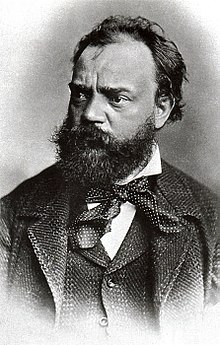Dvorak's Symphony No. 9,
the New World Symphony, is played so often that it runs the risk of sounding hackneyed. That
fact became painfully obvious to me during a recent visit to Japan, when I
heard the symphony's beautiful English horn melody in a cheesy, electronic
rendition, signaling "all clear to walk" at a bustling Sapporo
intersection.
As I returned to Dvorak's popular symphony
recently, I was struck by how incredibly fresh the music really is. I was
reminded of how Johannes Brahms was moved by Dvorak's melodic gifts, as well as
his ability to spin a seemingly infinite number of variations on a tune. This,
combined with Dvorak's Bohemian heritage, results in music unlike any other
composer's.
Symphony No. 9 is nicknamed New World because
Dvorak wrote it during the time he spent in the U.S. in the 1890s. His
experiences in America (including his discovery of African-American and
Native-American melodies) and his longing for home color his music with mixed
emotions. There's both a yearning that simmers and an air of innocence.
The music, for me, evokes
images. As the symphony opens, I picture Dvorak at the stern of the ship that
carries him to America, away from his country. As the land drifts out of sight,
he is suddenly jarred by the thought of the unknown with a blast from the French horn.
This slow introduction
conveys many emotions — sadness, fear, suspense, even a ray of hope — in its
brief 23 measures, until Dvorak eventually chooses which main melody will take
over the main part of the movement. A nostalgic folk tune provides simplicity
and variety, leading to the second theme, which is really a variation of what
came before, illustrating Dvorak's inventiveness with melody.
The New World Symphony's best-known melody surfaces in the "Largo" movement, with its aching English horn solo. It was later
adapted into the song "Goin' Home" by Harry Burleigh, a black
composer whom Dvorak befriended while in New York. But I'm always moved by the
church-like chords that come before that now-famous tune. In a stroke of
innovative genius, Dvorak brings these opening chords back at the climax of the
finale, where all the melodies from the symphony, reappear, transformed by the journey.In the scherzo movement
that follows, Dvorak explores the dance rhythms and melodies of his heritage.
They feel new and fresh, yet familiar at the same time. It contrasts with the
finale, which begins with a newfound urgency, setting up the nobility and majesty of the main melody heard in the
brass.
The New World Symphony is for me,
above all, a journey — Dvorak's journey to America, getting to know its people.
But more importantly, it's Dvorak's own spiritual and emotional journey: from
his intense longing for his beloved Bohemia to the thrill of the "new
world" and its varied peoples, to thoughts of going home.
When all the melodies return at the end of the
symphony, I feel as though Dvorak's American adventure has come full circle.
The end reminds me of an old film where the last scene is frozen and the circle
of the lens closes in until a black screen is all that remains.

Nenhum comentário:
Postar um comentário